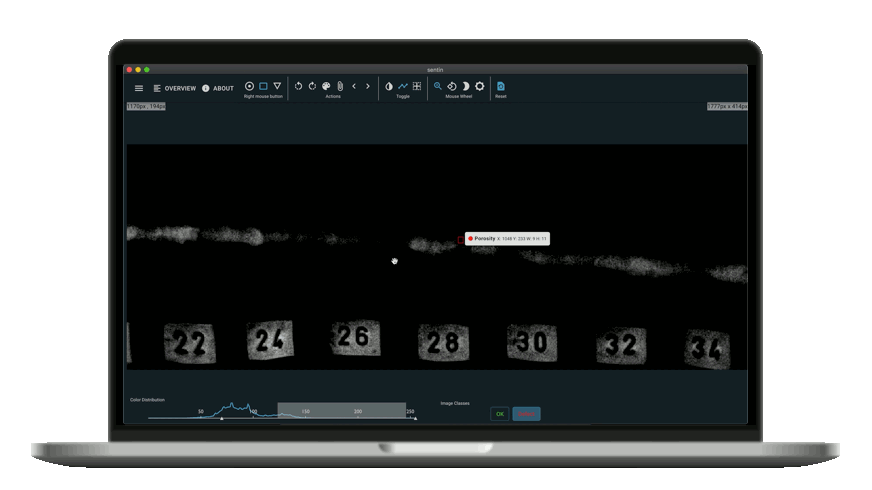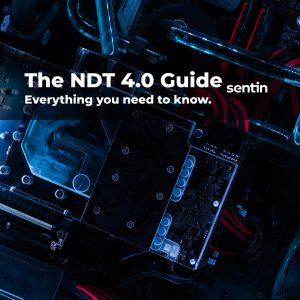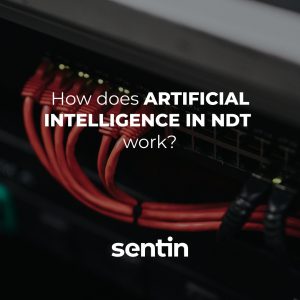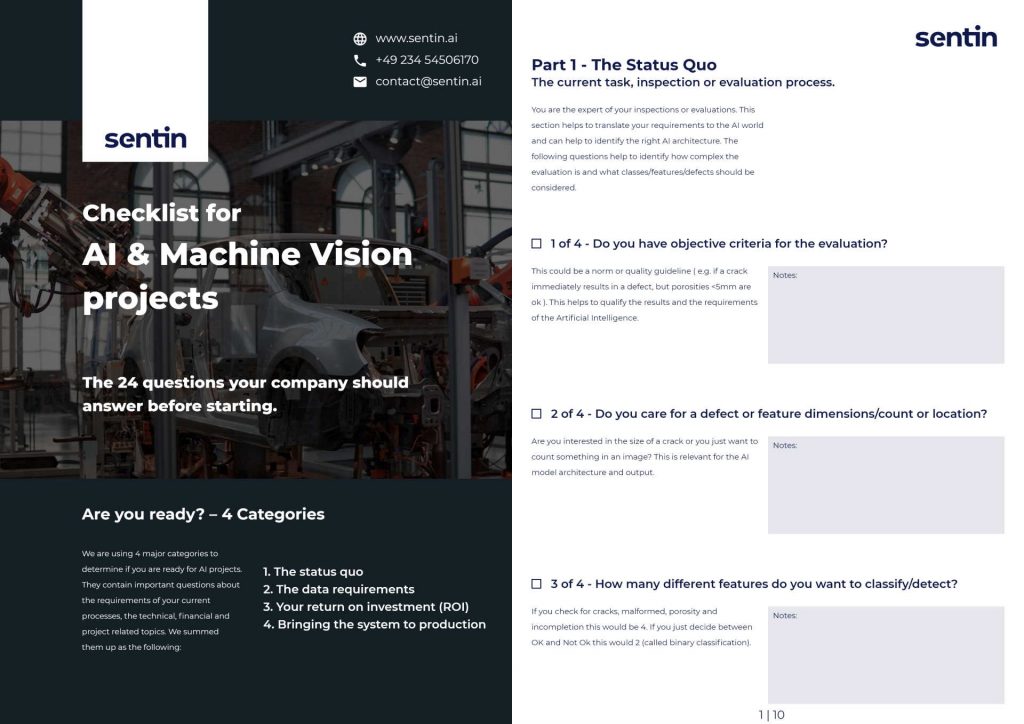There’s no doubt that technology has gone through a tremendous evolution, especially within the current and the previous centuries. The tasks that used to take a hundred men months to complete can now be done in a fraction of a minute, thanks to computer vision and artificial intelligence. No wonder the projections showing that the global AI (artificial intelligence) software market might experience 126 billion of revenue by the year 2025, according to a recent report by Tractica.
If you want to learn more about non-destructive testing, be sure to check out our FAQ about AI:
Content
What is Computer Vision?
Computer vision is viewed as a component of image processing, dealing with the science of machines and computers that are visually enabled. It automates the tasks that require the human visual system and improves their accuracy. In fact, computer vision systems can be up to 99% accurate in various processes/tasks. Sometimes they are even more accurate than human vision.
Computer Vision in combination with artificial intelligence is the interface between computer science and engineering. The combination helps organizations and industries in automating their important processes and minimize the need to use human interventions to make the processes as efficient as possible.
The 7 Most Innovative Computer Vision Examples:
It is worth noting that computer vision focuses on automatic extraction, analysis as well as understanding of crucial information from one or multiple images. On the other hand, artificial intelligence makes machines and computers behave like people. It concentrates on the planning of autonomous paths for use by robotic systems while navigating through various environments and many other innovative solutions.
There are several real world examples:
- Medicine Example: Skin Cancer
- Fun Example: Finding Waldo
- Security Example: Data Annonymization
- Office Example: Alternative Dispute Resolution (ADR)
- Medicine Example: Image Enhancement
- Sport Example: Human Pose Estimation
- Social Example: Social Distance Maintenance
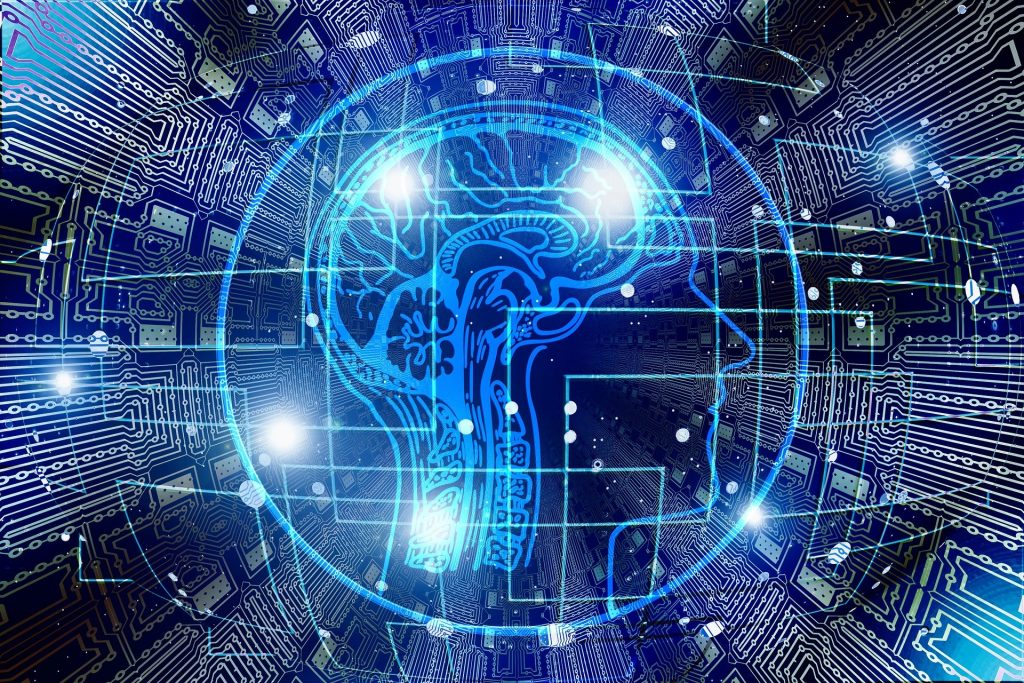
Medicine Example: Skin Cancer
Artificial intelligence and computer vision also play crucial roles in the healthcare industry. In this regard, let’s focus on the technology that has revolutionized skin cancer classification. The technology, which runs on artificial intelligence, is in the form of convolutional neural networks (CNN), which helps medical specialists and patients detect skin cancer earliest possible for proactive treatment. Amazingly, the skin cancer detection technology matches the dermatologist performance in melanoma as well as carcinoma classification. In other words, its level of competence compares to that of reputable dermatologists when it comes to the classifications through deep learning algorithms.
The developers of this technology pre-train CNN at general object recognition. After that, it is trained on a dataset containing 130,000 images of different skin lesions representing more than 3000 diseases. As a result, it is able to detect various lesions and classify them as benign wounds or malignant skin cancers eventually.

Fun Example: Finding Waldo!
The aim of game “Finding Waldo” is to find the character Waldo in pictures of crowded places with many obstacles. Finding him can now be as effortless as never before. Filling the report of a missing person on ”Where’s Waldo” is now effortless, thanks to a robot going by the name “There’s Waldo”. Developed by Redpepper, this sophisticated robot uses its artificial intelligence to point out the missing person using its super-accurate silicone hand.
There’s Waldo prides its uArm Swift Pro arm which is controlled by Raspberry Pi. The technology of the accurate robotic arm features a top-notch camera kit that facilitates accurate facial recognition. After taking the photo of the Where’s Waldo’s page, the robot finds the most relevant Waldos faces on the photo using OpenCV. It then sends the selected faces to Google’s AutoML Vision service for analysis. To ensure that accurate analysis is done, Google’s AutoML Vision service is thoroughly trained about the Waldo’s photos.
Then, the robot can determine different matches with different confidence levels. It points to every Waldo present on the page when a match’s confidence reaches 95 percent or more.
Security Example: Data Annonymization
Computer Vision and Artificial Intelligence come in handy for data anonymization, the process of changing or erasing part of a piece of sensitive information. Data anonymization aims at protecting sensitive information (such as people’s names, phone numbers, addresses, demographics, religion, medical and financial information), ensuring that all the individuals it describes remain fully anonymous. Conducting this process manually or using human intelligence and potential is not only time consuming but tiring and crowded with inaccuracies. Consequently, optimal results might not be achieved.
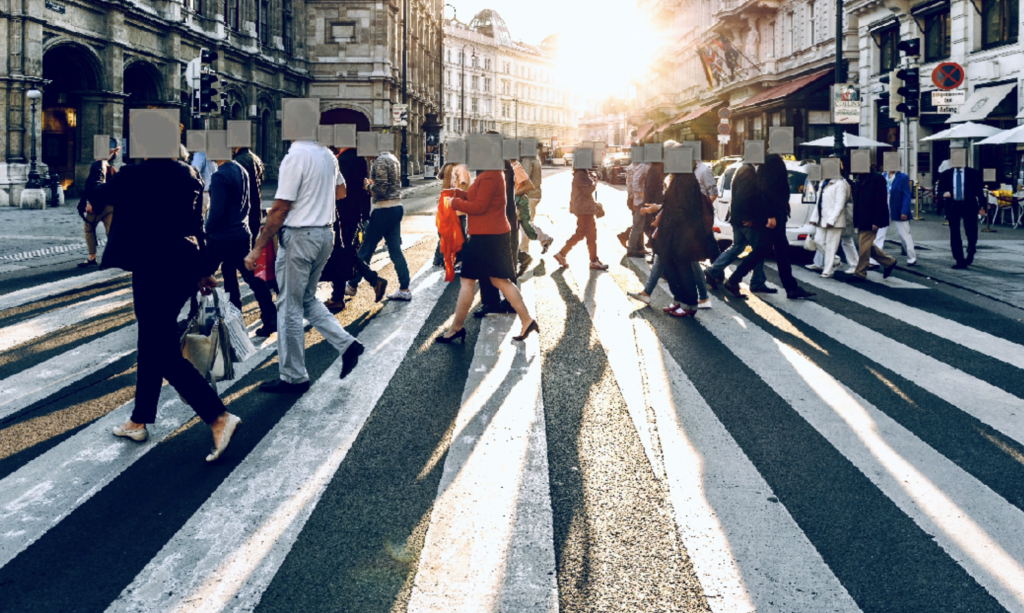
On the other hand, computer Vision and artificial intelligence are deployed for data anonymization, the process becomes more accurate and highly efficient. The synergy formed by both reproduces the human reasoning needed for various data anonymization approaches including pattern extraction from data sets and mimicking the necessary biological processes. This gives rise to AI (artificial intelligence) tools that can learn from historical data to give accurate direction in crucial judgments related to a particular data set without prejudice and bias.
Office Example: Alternative Dispute Resolution (ADR)
Alternative dispute resolution is another area in which computer vision and artificial intelligence have gained traction. For instance, Lex Machina, an AI computer program for data mining developed by Stanford University, has been of great help in the prediction of the progress/verdict of legal cases in the United States.
Another example of AI and computer vision application is Case Cruncher Alpha, an AI system that predicted the outcome of over 700 ombudsman cases with approximately 86% accuracy. As such, ADR personnel have found great relief through such AI systems as it makes the process of identifying the right information to focus on when dealing with legal cases very efficient.
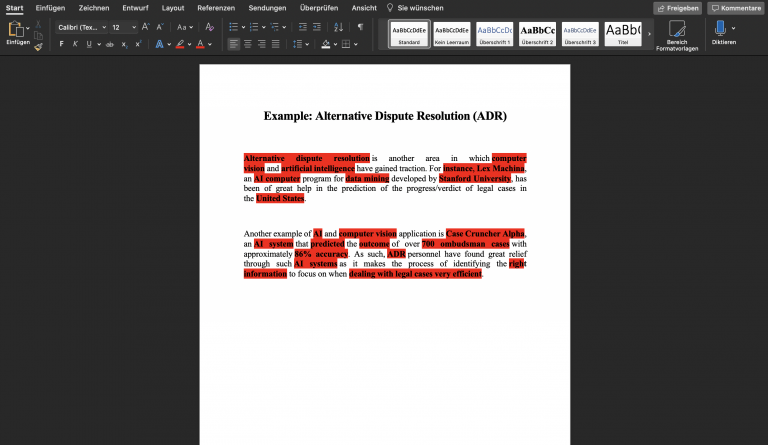
The software analyses text documents and highlights the most important content.
Medicine Example: Image Enhancement
Machine learning, the key AI anchorage, and computer vision have triggered unprecedented experiences in medical field as well, particularly in the medical imaging field. AI tools have been developed to minimize labour intensive and recurring tasks (for instance medical image analysis) at local levels.
Through machine learning, tasks related to recognition of various disease features and analyzing the surrounding textual features has been ultra-efficient for medical practitioners. AI and computer vision have revolutionized all aspects of medical imaging, including single photon emission computed tomography, x-ray, magnetic resonance imaging, computerized tomography ad well as ultrasound. They can help to mark relevant points (key points) e.g. joints or to suppress noise in images efficiently.
The synergy of computer vision and artificial intelligence in the various aspects of medical image enhancement produces reliable and accurate result analysis that assist medical teams to make various health judgements accurately and more efficiently.
Sport Example: Human Pose Estimation
Human pose estimation is another area where computer vision has touched greatly. Human pose estimation refers to the process body configuration estimation from just one monocular image. It is a computer vision-based technology that’s currently popular for the detection and analysis of human posture. The analysis and detection occurs through deep learning algorithms.
Human pose estimation in applicable in various areas including augmented reality experiences, robot training, animation, gaming as well as real-time sport analysis activity recognition. In the sports arena, fitness coach apps give a glimpse of the level of efficiency that AI can bring. The AI fitness coach applications offer near-real-coach experience, including:
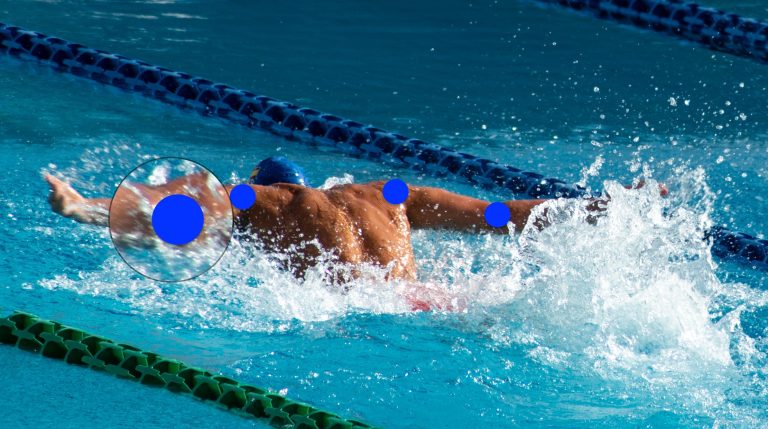
- Capturing the movements of the target person
- Analyzing the suitability of the performance of a physical exercise
- Showing workout mistakes
Those are just some of the instances where AI human pose estimation comes in hand; the list is longer.
Social Example: Social Distance Maintenance
The recent COVID-19 pandemic has seen the world population adopt to a new normal of social distancing. However, even with WHO and the ministries of health highly encouraging the observance of the social distance guideline, some individuals are still adamant to adhere. As such, organizations have taken the responsibility to ensure their people adhere to the requirement. This is where computer vision comes in handy too.
Computer vision helps in tracking people in a particular area to ascertain if they are complying to the social distancing requirements or not. It’s indeed a game changer in the healthcare industry.
Computer vision and artificial intelligence have brought efficiency and accuracy in various aspects of human lifestyle. Finding Waldo, social distancing maintenance, human pose estimation, medical image enhancement, data anonymization and skin cancer classification are some of the areas that these two technologies have touched.
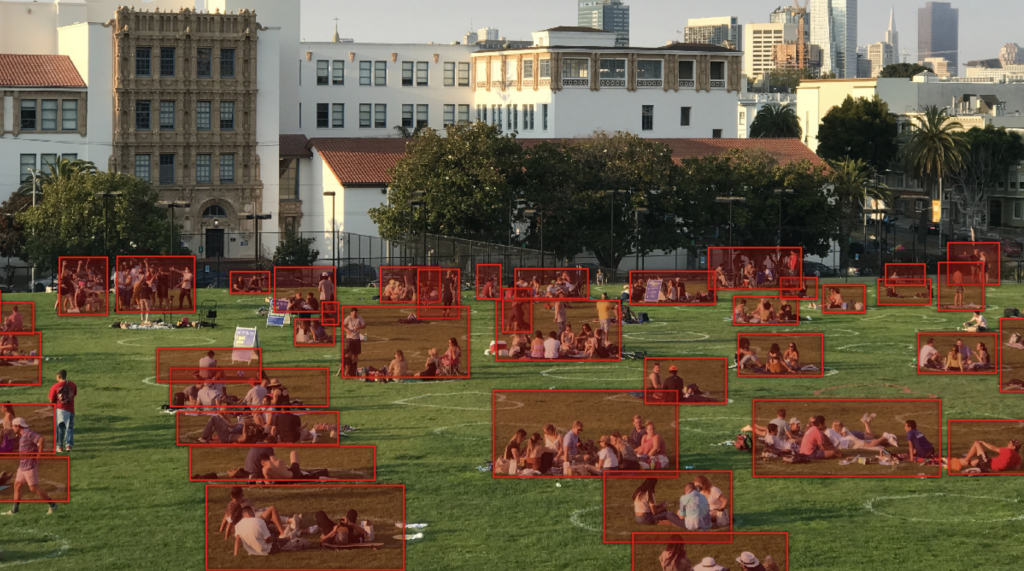
Computer vision helps in tracking people in a particular area to ascertain if they are complying to the social distancing requirements or not. It’s indeed a game changer in the healthcare industry.
How can I use AI & Computer Vision today?
Computer vision and artificial intelligence have brought efficiency and accuracy in various aspects of human lifestyle. Finding Waldo, social distancing maintenance, human pose estimation, medical image enhancement, data anonymization and skin cancer classification are some of the areas that these two technologies have touched. But how can you use it for your use case today?

The sentin EXPLORER is a tool to automate such inspection or image evaluation tasks. Our customers sometimes produce thousands of images per week, all of which have to be reliably checked. Therefore we give you the power to perform evaluations with the help of artificial intelligence and to find defects more reliably or gain new insights.

